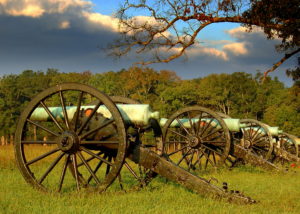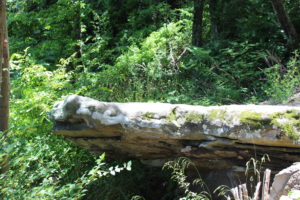The first military battlefield protected by the U.S. government was the Chickamauga and Chattanooga National Memorial Park, established on August 19, 1890. The park preserves various locations in and around Chattanooga, Tennessee, that comprised an important Civil War confrontation during the second half of1863.

The park pre-dated all other battlefield parks, including Gettysburg (established five years later). The time was nearing when few actual participants in the Civil War remained alive. Consequently, students of military history and veterans and their relatives began to lobby for preservation of important locations as a source of knowledge about military strategy and as a monument to the soldiers who fought and died there. Chit-Chat, as the Chickamauga and Chattanooga location is commonly called, became particularly meaningful because veterans from both sides of the Civil War agreed to come together to promote the preservation of the area and to record its history from both Union and Confederate perspectives. The extended battle there, occupying several months and seesawing between Union and Confederate dominance, was among the most important and vicious of the war, causing approximately 40,000 total casualties. Working together, advocates pushed through a bill with virtually no controversy “…to establish a National Military Park at the battlefield of Chickamauga,” signed by President Harrison on August 19, 1890.

The park encompasses about 7600 acres at several sites near the Tennessee River where it flows through Chattanooga. The park includes part of Lookout Mountain, a major geologic and tourism feature of the region. The landscape is part of the Appalachian Blue Ridge, old mountains heavily scored by small streams and rivers and covered in dense forests of mixed hardwoods. Because the Tennessee River flows from east to west in this region, it has always been an important transportation corridor, for Native Americans as well as European settlers and contemporary commerce. Consequently, it was also a strategically important route for movement of troops and supplies during the Civil War.
From a conservation standpoint, Chit-Chat is also important as the beginning of extensive historical and cultural resource protection by the federal government. Within the next decade, Congress and presidents preserved a large number of other Civil War battlefields, including Gettysburg, followed by a continually increasing roster of other historic and cultural areas. Today, the National park Service manages 25 national battlefields and 129 national historic, along with the natural sites that are so beloved by Americans.
References:
National Park Service. Chickamauga and Chattanooga Administrative History. Available at: https://www.nps.gov/parkhistory/online_books/chch/adhit.htm. Accessed August 18, 2017.
Sutton, Robert K. 2008. Holding the High Ground: Interpreting the Civil War in National Parks. George Wright Forum 25(3):47-57. Available at: http://www.georgewright.org/253sutton.pdf. Accessed August 18, 2017.
